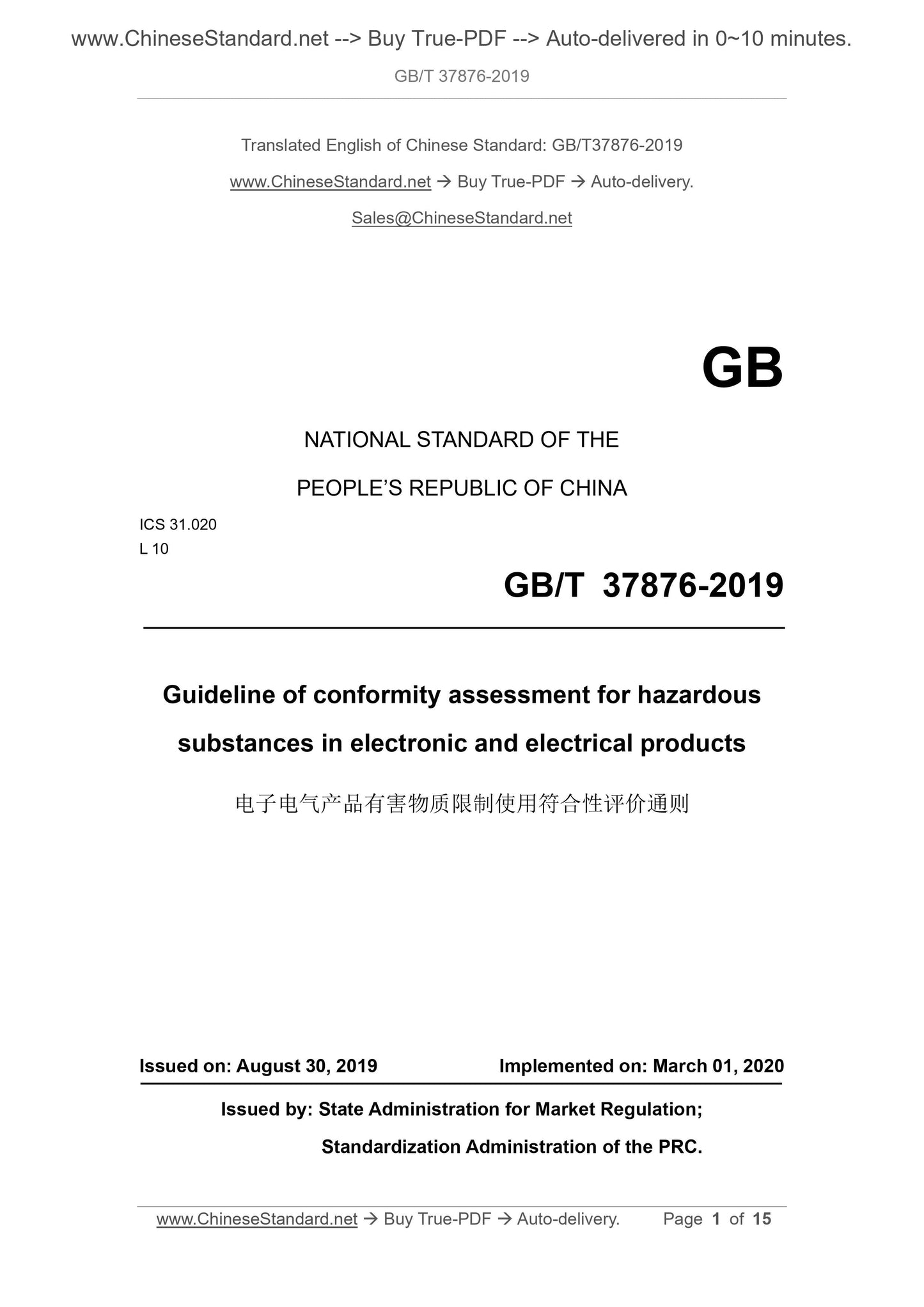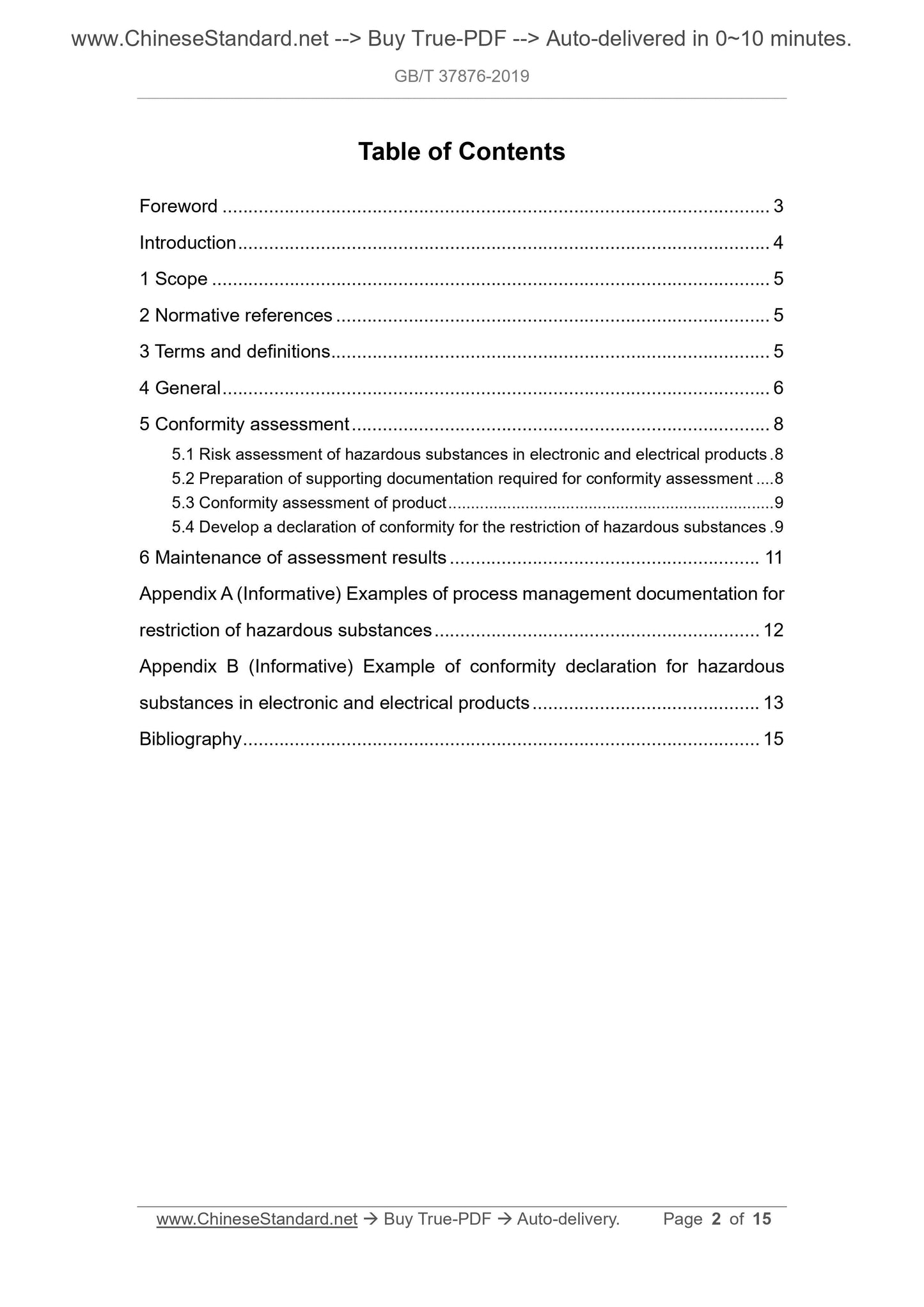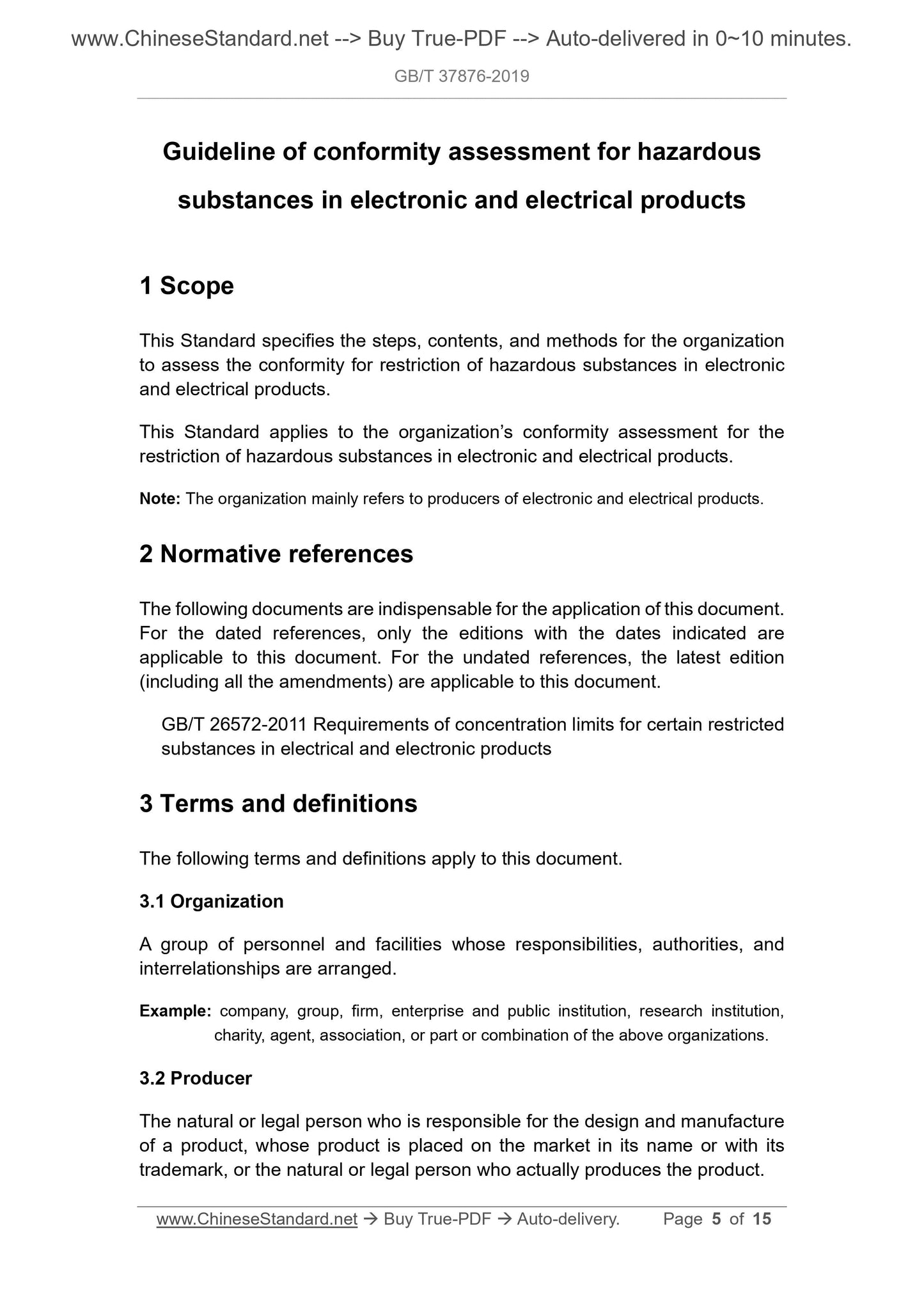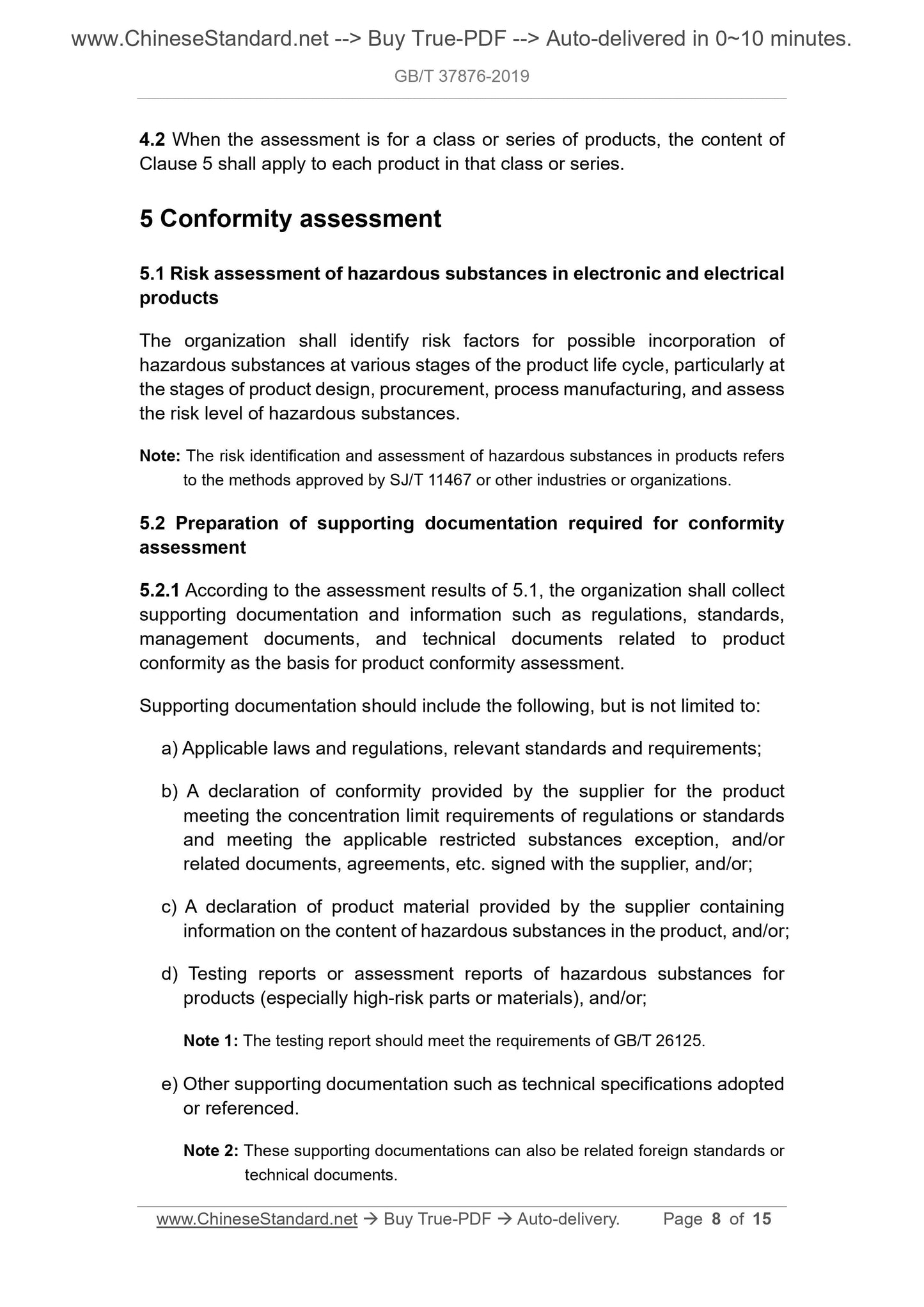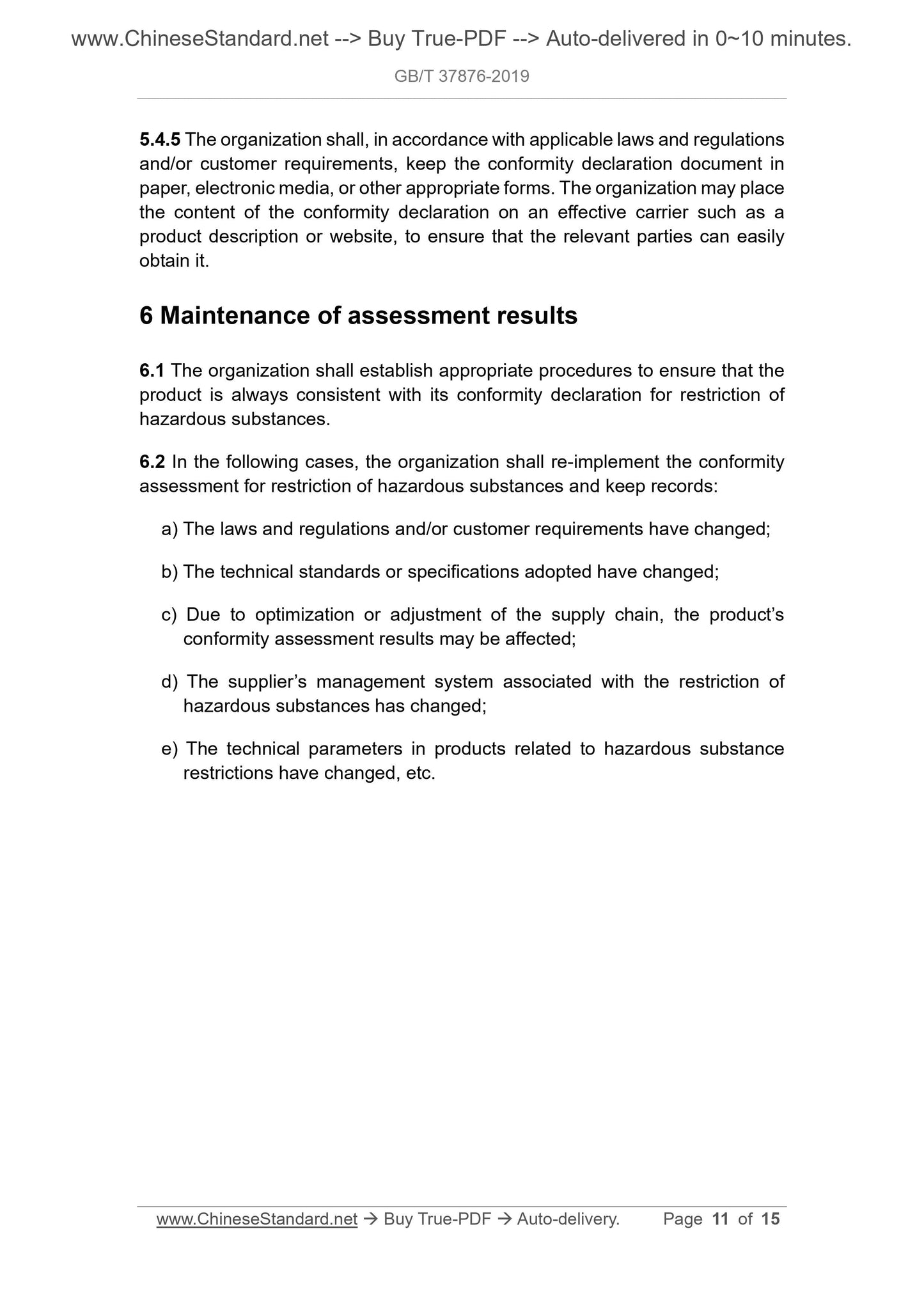1
/
of
5
www.ChineseStandard.us -- Field Test Asia Pte. Ltd.
GB/T 37876-2019 English PDF (GB/T37876-2019)
GB/T 37876-2019 English PDF (GB/T37876-2019)
Regular price
$135.00
Regular price
Sale price
$135.00
Unit price
/
per
Shipping calculated at checkout.
Couldn't load pickup availability
GB/T 37876-2019: Guideline of conformity assessment for hazardous substances in electronic and electrical products
Delivery: 9 seconds. Download (and Email) true-PDF + Invoice.Get Quotation: Click GB/T 37876-2019 (Self-service in 1-minute)
Newer / historical versions: GB/T 37876-2019
Preview True-PDF
Scope
This Standard specifies the steps, contents, and methods for the organizationto assess the conformity for restriction of hazardous substances in electronic
and electrical products.
This Standard applies to the organization’s conformity assessment for the
restriction of hazardous substances in electronic and electrical products.
Note: The organization mainly refers to producers of electronic and electrical products.
Basic Data
| Standard ID | GB/T 37876-2019 (GB/T37876-2019) |
| Description (Translated English) | Guideline of conformity assessment for hazardous substances in electronic and electrical products |
| Sector / Industry | National Standard (Recommended) |
| Classification of Chinese Standard | L10 |
| Classification of International Standard | 31.020 |
| Word Count Estimation | 10,192 |
| Date of Issue | 2019-08-30 |
| Date of Implementation | 2020-03-01 |
| Issuing agency(ies) | State Administration for Market Regulation, China National Standardization Administration |
Share
